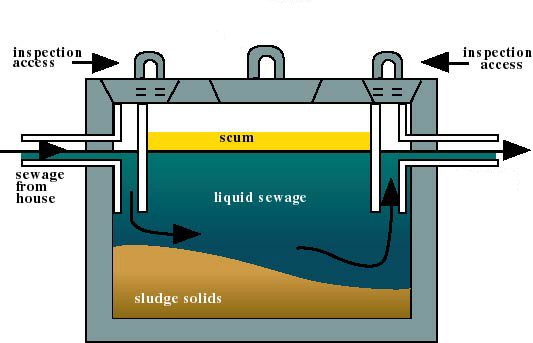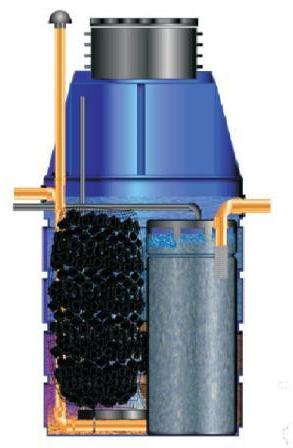The Operation of a Septic Tank

A modern Alpha Septic Tank (as produced by Marsh)

A Septic Tank is a form of holding chamber utilising a form of internal construction to slow down the flow through the tank unit. The outlet from the septic tank leads to a soakaway system below the ground surface.
The diagram shows a traditional single septic tank having just one chamber and using inlet and outlet T pipes. This is the simplest form of septic tank and works as follows:
- Sewage enters via the inlet T pipe and discharges to the lower of the tank.
- Gravity pulls the solids in the sewage to the base and via anaerobic biological action, a scum layer can form on the surface
- Effluent (with a very low solids content) leaves via the oulet T pipe. This can then enter a second or third chamber and then leads to a soakaway field drainage system.
The basic principle is to remove as much of the solids content from the final effluent as possible.
Here is a modern septic tank formed via a resin mould. This type of tank is very efficient and has internal baffles which reduce the flow and allow solids to settle to the base.
By understanding the basics of a septic tank you may be able to appreciate the problems that can be encountered.
Please return to Septic Tank Help Page.
Talk to one of our
engineering team call now on!
